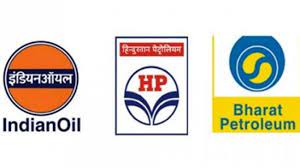The government announced an Rs. 30, 000 crore allocation for capital support to the OMCs during the budget in February 2023

Recent announcements of plans to raise equity capital by two of India’s top-three majority state-owned oil marketing companies (OMC) - Bharat Petroleum Corporation Limited (BPCL) and Indian Oil Corporation Ltd (IOC) - should strengthen their capex spending and the credibility of their emission-reduction plans, says Fitch Ratings.
An injection of capital from the Indian government would provide further evidence for our assumption that the two companies would receive extraordinary sovereign support if needed, the key factor underpinning their ‘BBB-’/Stable ratings.
The government announced an Rs. 30, 000 crore allocation for capital support to the OMCs during the budget in February 2023, and we believe the equity injection forms part of these plans. BPCL is seeking to raise Rs 18,000 crore through a rights issue for achieving energy transition and energy security objectives. Meanwhile, IOC has said a rights issue will be considered at its board meeting on 7 July; the firm has already approved an increase in its authorised share capital of Rs. 15,000 crore.
We believe the size of the planned aggregate equity infusion may be higher than the budgetary allocation due to minority investors’ participation in the rights issues, but will monitor developments for more clarity. India’s third major OMC, Hindustan Petroleum Corporation Limited (HPCL), has not yet announced similar proposals, but we expect it to receive a share of the government’s capital support too.
All three OMCs last year announced targets to reduce scope 1 and 2 emissions (those directly emitted by the firm itself and those indirectly stemming from its energy or cooling purchases) to zero. BPCL and HPCL seek to do so by 2040, and IOC by 2046. We believe the OMCs have the execution capabilities to carry out these plans, but such long-term targets inevitably remain subject to risks, including energy demand-supply mismatches, slow or insufficient technological or policy progress, and lack of infrastructure.
As part of its energy-transition goals, BPCL is also looking to expand its renewable power generation portfolio to 1GW by 2025 and 10GW by 2040, from 50MW currently. IOC is also looking to expand its renewable energy portfolio substantially from the current level of 238MW, and to install 10,000 electric vehicle charging stations in the next three years, from the 1,900 it has already. In addition, both firms aim to reach an average 20% ethanol blend in their petrol across India by 2025, up from the 10% level that was achieved in June 2022, and to build green hydrogen plants.
Higher capex on energy transition and emissions reduction may gradually have more influence on the OMCs’ standalone credit profiles, but we do not expect it to play a significant role in the next few years. Our base case capex estimates for the OMCs already include green capex, although we expect investment in refining, petrochemicals, marketing infrastructure, pipeline capacity and city-gas distribution will continue to account for a majority of their high capex levels in the next few years.
An increase in the OMCs’ green capex should coincide with waning refining capex over the medium- to long-term. We believe the equity issuance would strengthen the OMCs’ balance sheets, improving their capacity to undertake such capex.
Subscribe to our newsletter & stay updated.